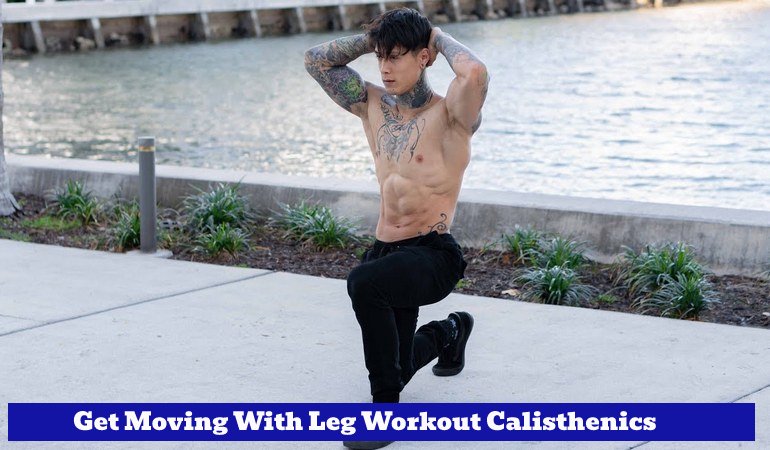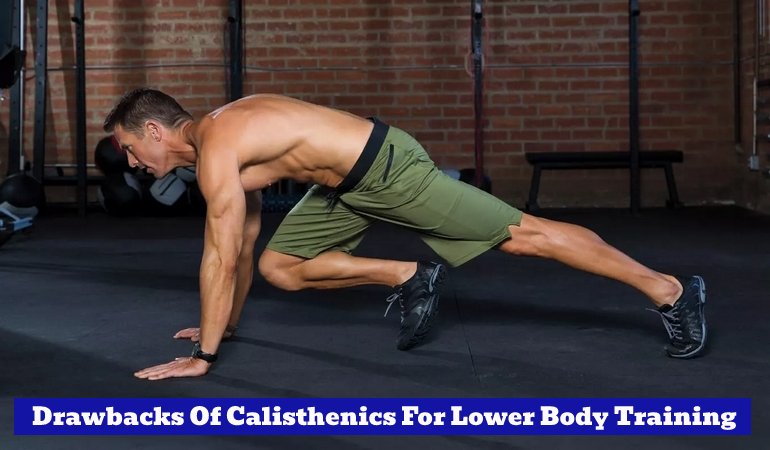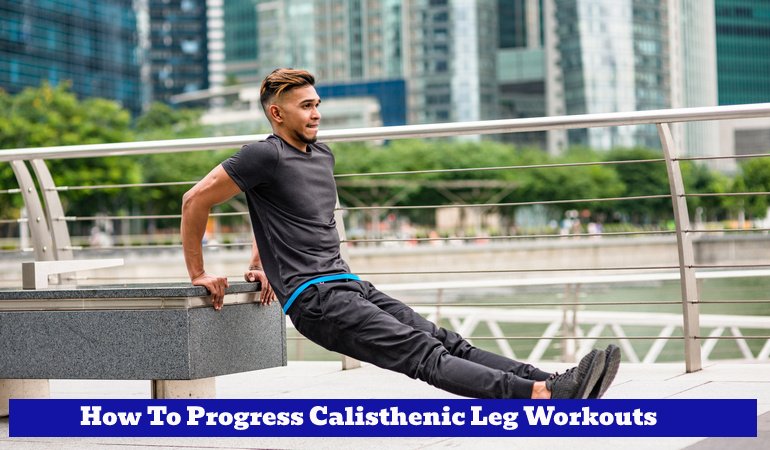Get Moving With Leg Workout Calisthenics

Leg workouts are an important part of any comprehensive fitness program. Calisthenics, or bodyweight exercises, are a great way to develop strength and endurance in your lower body without needing access to special equipment. Here’s how you can get started with leg workout calisthenics today!
To begin your leg workout calisthenics, start by doing simple exercises like wall squats and lunges. These will help you build the basic foundation of strength in your lower body that is needed for more advanced movements like jump squats and pistol squats. Once you feel comfortable with the basic activities, move on to squat pulses and calf raises. When done together these two exercises will give your legs a full range of motion that will enable them to become stronger over time. Additionally, when done at a high intensity they can also provide cardiovascular benefits as well!
What Is Calisthenics
Calisthenics is a form of exercise that consists of bodyweight movements, often performed without the use of any equipment. It is a way to build strength and gain muscle using only the weight of one's own body and gravity. Calisthenics can be used to improve overall fitness levels, including cardiovascular health, muscular strength and endurance, as well as flexibility and balance.
The exercises involved in calisthenics are typically simple movements such as squats, push-ups, pull-ups, crunches and jumping jacks. The focus is on performing these exercises with good technique and proper form for maximum benefit. Calisthenics takes advantage of the resistance provided by one's own bodyweight to challenge muscles out in different ways than traditional weight lifting does.
Related: Effective TRX Lower Body Workout for Your Legs and Glutes
Who should do Leg Workout
Leg workouts are essential for building strength and definition, but who should be doing them? Leg workouts are beneficial to everyone, regardless of gender or fitness level. Although they require more energy than other body parts, leg exercises can help you improve your balance, build lean muscle mass, increase overall strength and endurance, and burn more calories while exercising.
For those new to exercise or looking to get back into it after a long break, leg exercises are an excellent starting point. Squats and lunges work multiple muscles at once which helps you build strength effectively without having to do many individual exercises. They also don’t require any special equipment so anyone can do them from the comfort of their home or in a gym setting. Advanced athletes can benefit from incorporating leg exercises into their workout routine too.
Related: Get Stronger with This Effective Legs and Shoulders Workout Routine
<img src="https://rocksolidtrainer.com/img/post1.jpg" width=100%" alt="img">
Best Calisthenics Leg Workout Routine
Calisthenics leg workouts are a great way to build strength and tone your legs. The best calisthenics leg workout routine will target all the major muscles in your legs, helping you achieve that strong and toned look that you desire. Not only is calisthenics an effective form of exercise, but it’s also easy on the wallet since little to no equipment is needed. Here we will outline some of the best exercises for a full-body calisthenics leg workout routine that will help strengthen and shape your lower body.
This comprehensive calisthenics routine includes squats, lunges, donkey kicks, calf raises, jump squats and hip thrusts; all essential exercises for strengthening and toning your legs. Squats are great for increasing overall strength as well as working out both the glutes and quads at the same time.
- Box Jumps: 5x5
- Pistol Squats: 4xRPE8
- Bodyweight Squats: 4xRPE8
- Glute Bridge: 4xREP8
- Split Squats: 3xRPE8
- Knee Tucks: 3x10-20
- Calf Raises: 2x Failure
Related: Upgrade Your Gym with These Must-Have Leg Workout Equipment
Benefits Of Leg Workout Calisthenics
Leg workout calisthenics is a form of exercise that utilizes bodyweight movements to build strength, power and endurance. It is an effective way to improve overall fitness, mobility and posture. In addition to physical benefits, leg workout calisthenics can also have positive effects on mental health.
One of the most obvious advantages of leg workout calisthenics is its convenience: no expensive gym membership or equipment required! All you need is your own body weight and the willingness to put in some effort. Leg calisthenics exercises such as squats, lunges and step-ups are easily scalable for people of all fitness levels; you can start out with easier variations and work your way up to more complex movements as you become stronger. Leg workouts can help increase muscle size, strength and power while also improving flexibility and cardiovascular fitness.
Related: Get Your Legs Pumped with this 15-Minute Lower Body CrossFit Workout
Drawbacks Of Calisthenics For Lower Body Training
Calisthenics is a type of exercise that uses bodyweight movements to increase strength and fitness. While it can be beneficial for overall health, there are some drawbacks to using calisthenics as the primary form of lower body training.
The first drawback is that without the assistance of weights, progress can potentially plateau quickly. In order to continue making gains in strength and muscle growth, calisthenic exercises must be continually modified or progressed with more challenging versions. This requires knowledge about how to modify the exercises correctly and safely, which may not be accessible for all individuals. Another possible downside to using calisthenics exclusively for lower body training is that certain muscles may not receive adequate stimulation due to limited range of motion in certain exercises.

Advanced Calisthenics Leg Exercises
Calisthenics is a great way to get in shape and build your leg muscles. With advanced calisthenics, you can take your workouts to the next level and achieve an even higher level of fitness. Here are some of the best advanced calisthenics leg exercises that will help you get stronger, fitter legs.
One great option for an advanced calisthenics exercise is the pistol squat. This move requires you to balance on one leg while performing a deep single-leg squat to full extension without using any weights or machines. It is excellent for strengthening the lower body and developing balance and coordination. Another excellent option is the Bulgarian split squat jump, which involves jumping from side-to-side while in a lunge position with both feet flat on the floor.
Tips For Improving Your Calisthenics Leg Exercises
Calisthenics leg exercises are a great way to get a full-body workout in the comfort of your own home. Whether you’re looking to build strength or increase flexibility, adding calisthenics leg exercises into your routine can help you reach your goals. Here are some tips for improving these exercises and getting the most out of them.
First, focus on proper form. Make sure that throughout each exercise you’re keeping your back straight and engaging all the necessary muscles. Doing so will help ensure that you're targeting the right areas and maximizing the benefit of each exercise. Secondly, practice proper breathing techniques during each set of reps; inhale as you lower and exhale as you raise for best results. Lastly, make sure to give yourself plenty of rest between sets so that your body is properly recovered before performing another round of reps.
How To Progress Calisthenic Leg Workouts
Calisthenics are a great, low-impact way to stay physically fit and improve overall muscular strength. Progressing calisthenic leg workouts can help you to reach your fitness goals faster. Continue reading for tips on how to progress the intensity of your calisthenic leg workouts.
First, focus on form rather than speed or weight when doing each exercise. This will ensure that every repetition is done correctly and safely, allowing you to maximize the effectiveness of the workout while minimizing the risk of injury. When you are confident with proper form, start adding repetitions or sets to increase difficulty level. Additionally, try changing up the order in which exercises are performed as well as mixing up different types of exercises within each workout for better results and improved muscular endurance.

Pros & Cons Leg Exercise
Leg exercises are an important part of a comprehensive fitness routine, but they come with their own set of pros and cons. With the right knowledge of these advantages and disadvantages, individuals can ensure they're getting the most out of each workout session.
The primary pro to engaging in leg exercise is that it builds strength throughout the lower body, including glutes, calves, hamstrings, quads and more. This helps individuals to perform everyday activities with ease and can also help improve balance for those at risk for falling. Additionally, leg exercises such as squats or lunges can be great calorie burners and assist in weight loss goals. On the flip side, some people may experience pain from certain leg exercises due to existing injuries or muscle imbalances.
Mistakes of Legs Workout
Legs workouts can be a difficult undertaking, and if not done properly, they could lead to serious injury. Unfortunately, many people make mistakes when it comes to legs workouts that can impede their progress and even cause harm. From incorrect form to omitting certain movements altogether, understanding the common mistakes of leg workouts can help you get the most out of your efforts and stay safe in the process.
The first common mistake is not warming up adequately before beginning your workout. Warming up increases blood flow to muscles and prepares the body for exercise. Another important mistake to avoid is failing to use proper form while doing leg exercises. Doing exercises with incorrect form won't only reduce effectiveness; it could also increase your risk for injury due to overworking or straining muscles.
Results Leg Workout Calisthenics
A good leg workout is key to building strength and power in your lower body. Calisthenics, or body-weight exercises, are a great way to get an effective leg workout without any equipment. This calisthenics based leg workout is designed to maximize strength and muscle growth while also giving you the cardiovascular benefits of a high intensity exercise.
This calisthenics based leg workout consists of four exercises broken down into three sets. Each set should be completed with no rest between exercises; rest for one minute after each set has been completed before moving onto the next one. The first two sets focus on squats, which will help develop the quadriceps and glutes; for the third set, lunges are included in order to target those same muscles as well as the hamstrings and calves.